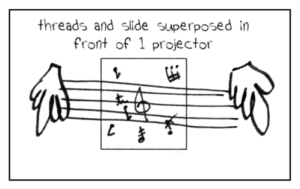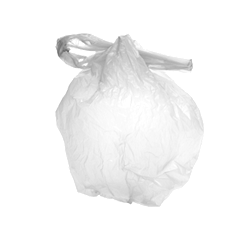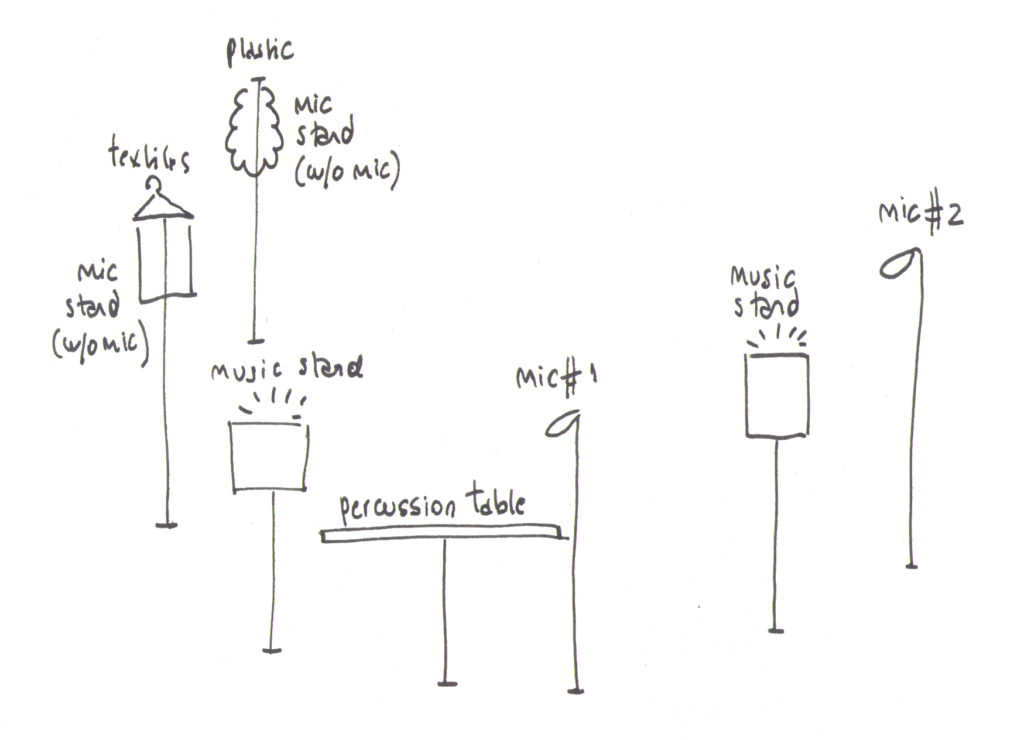Dos #1 for voice and two pickup players (or tape)
commissioned by Stichting Plan B, Amsterdam
Dos #2 for violin, cello and two pickup players (or tape)
commissioned by DieOrdnungDerDinge, Berlin
Working with recordings brings the possibility to recall different versions of the same piece. Old voices are in counterpoint with the live performance and the music splits into diverse historical lines. As a science fiction movie, the past converges with the present: in an ex-temporary gesture, Schumann is reflected on vinyl, the future for him.
In classical musical instruments, model, year, material, and builder have an enormous impact on the characteristics of their sound. The same happens with domestic appliances: every model, every speaker, every decade, brings its own particular sound.
These domestic appliances are generally built to be used at home and not in a stage. In this music -never better employed the term chamber music- domestic appliances bring the atmosphere of a house to the stage.
Devices are in dialogue with live instruments or the human voice in a “concerto” form. A historical pre-recorded vinyl version of Schumann´s Carnival is manipulated live in a “live electronics” DJ style.
The name Dos (two) refers to the sad bipolar condition attributed to Schumann. Two pickup players, slightly out of synch, build a psychological atmosphere full of distorted mirrors.
Program notes for Dos #2 DieOrdnungDerDinge, Berlin June 2016 (in Spanish)
Colección de piezas compuestas en base al “Carnaval” de Robert Schumann. Música para violin, cello y dos tocadiscos.
Este concierto se basa grabaciones en vinilo de música de Robert Schumann en contrapunto con nueva música compuesta por Cecilia Arditto para instrumentos en vivo.
La grabación histórica congela una versión específica de la música que dialoga en vivo con otro presente musical en una clara metáfora sobre el tiempo: un tiempo congelado en contrapunto con un tiempo nuevo.
Los tocadiscos son considerados también instrumentos musicales. Además de reproducir una grabación específica, cada tocadiscos, tiene un sonido particular en sí mismo, un aura, una historia que imprime una cualidad especial en el sonido reproducido, trayendo no solo las grabaciones del pasado, sino sus características de reproducción.
Las grabaciones originales del Carnaval de Schumann están procesadas en vivo, utilizando los recursos propios de los tocadiscos: alteración del volumen, tono y distintas velocidades (16-33 ½, 45 y 78) y manipulación del vinilo, scratches, ruidos con la púa, etc, en un estilo “low-tech DJ”.
Dos esta basada en el número Chopin del Carnaval op.9 de Schumann, reproducida en dos tocadiscos con grabaciones idénticas en un juego de velocidades cambiantes (16, 33 ½, 45 y 78 rpm) en contrapunto con los instrumentos en vivo. Dos remite a la condición bipolar de Schumann y su diálogo constante con sus “alter egos” presentes en su producción musical.
Link artículo PDF “Modi�caci�ón de algunos par�ametros de una grabaci�ón en LP al cambiar la velocidad del plato” por Gabriel Abellán (Spanish)
Preparations
https://vimeo.com/579027979https://vimeo.com/579028004https://vimeo.com/579028033
1. Overview
2. Buttons
3. Pitch
https://vimeo.com/579028057https://vimeo.com/579028594https://vimeo.com/579032334
4. Finger gliss.
5. Speed
6. Speakers
https://vimeo.com/579032473
Improvisation with pickups and props
https://vimeo.com/142053950#t=436s
Muziek als vinyls & tapes: Ratatouille TV- Amsterdam
Dos #1:
Dos #2:
Related works:• Spiegeltjes (little mirrors) (2016)


